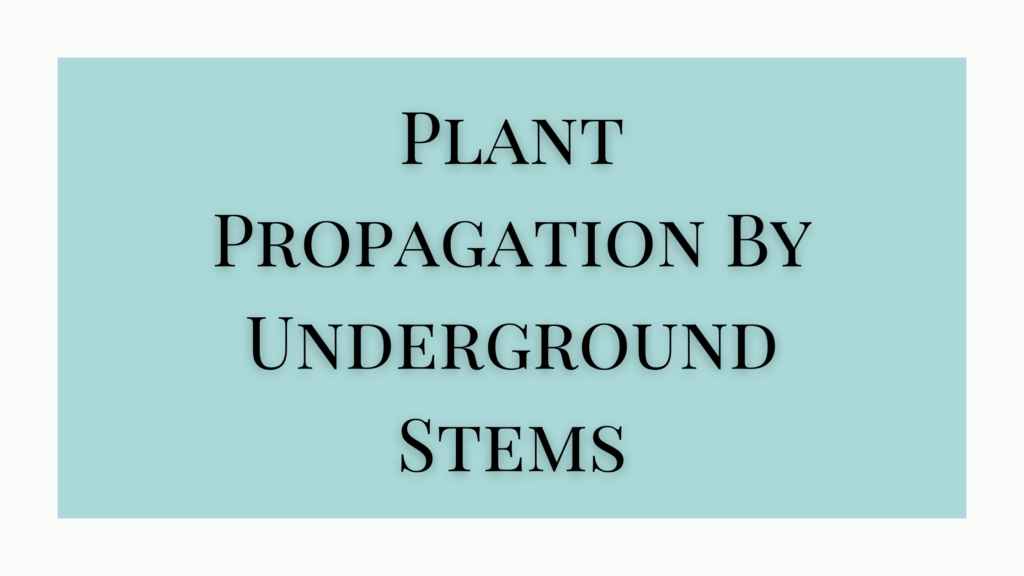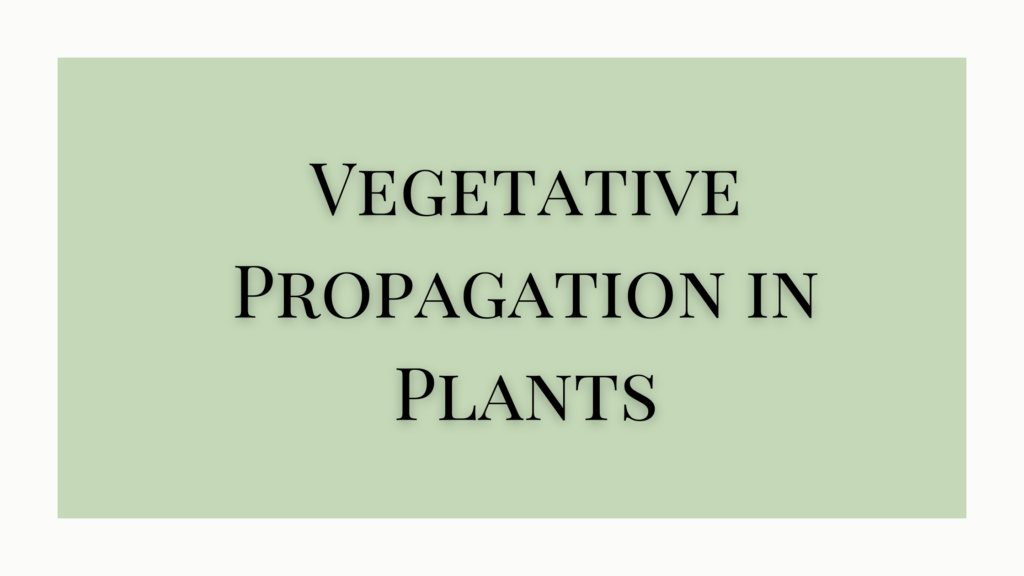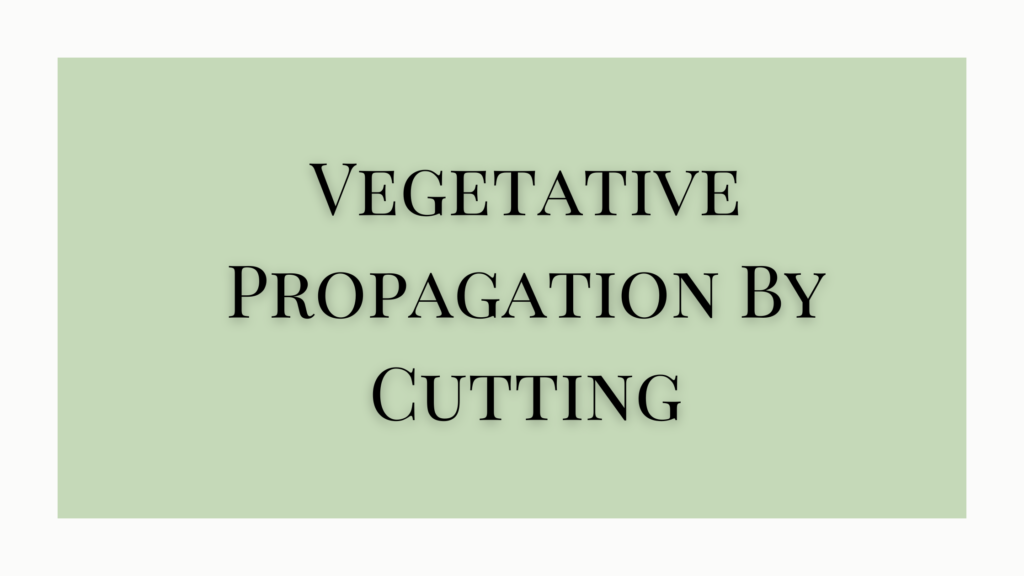Not all plants propagate by their aerial parts. In some plants, propagation by underground stems which are modified parts.
The underground stems of some plants are modified into different structures that mainly serve as food storage. The types of underground stems are bulbs, tubers, corms, rhizomes, stolons, etc. Each of these structures is useful as a means of vegetative propagation.
Plants that possess such specialised vegetative structures are primarily herbaceous perennial where the shoots die until the next growing season. The plant part below the ground remains in a dormant state that bears buds that can produce new shoots in the next season. Such dormant organs or parts are the main tools of vegetative propagation for these plants.
Propagation by Bulbs
Bulbs are characteristic of monocot plants where the underground stem is modified for both storage and reproduction. These specialized underground stems consist of short, fleshy, usually vertical stem axes, that bear a growing point at its apex enclosed by thick fleshy leaves. Bulbs are of two kinds, tunicate and non-tunicate.
- Tunicate bulbs
Tunicate bulbs have fleshy scale leaves arranged in concentric layers around the growing point. They are called tunicates because the outer layer of leaves dries out to form a protective tunic that covers the bulb. They are propagated by offsets which are smaller bulbs arising naturally at the base of the mother bulb. Eg. Onion.
Non-tunicate bulbs
In this type, the scale leaves are not concentric. Instead, they are loosely arranged like petals of a flower, overlapping one another only at the margins. This results in a scaly appearance. Such bulbs do not have a compact body and are not usually not covered by any tunic. Eg. Garlic, Lilly species. Non-tunicate bulbs are also propagated by offset scaling of the bulbs. Some Lillies produce aerial bulbs called bulbils.
Propagation by Offsets
The mother bulbs develop buds when they reach maximum size. These buds are produced at the axils of the scales. These bulbs continue to be attached to the stem and develop daughter bulbs. These daughter bulbs are called offsets. At the end of the growing season, they are detached from the mother plants. The offsets or the axillary buds take less time to flower when compared to the seeds and scales.
Other methods used
- Bulb cutting is a useful method of propagation of several bulbous plants. The cuttings are planted in routine media such as sand, vermiculite, or peat moss (Sphagnum).
- Scales are also used for propagation and the process is called scaling.
- Some Lillies produce aerial bulbs called bulbils in the axils of leaves, usually after flowering. These bulbils are separated and used for propagation.
Corm Vegetative Propagation
A corm is a solid, swollen, and short underground stem having one or several buds near the top, thick fibrous roots around the base, and a tuft of leaves on the upper side. It has a layer or cork covering and remains enclosed by membranous scale leaves. These corms develop smaller daughter croms called cormels which can develop into a new plant. Unlike the bulbs, corms have short nodes around them. Examples of corm are Gladiolus and Amorphophallus.
In Gladiolus, the old corm gradually shrivels or decays before the end of the growing season and is replaced by one or more new corms accompanied by many small cormels originating near the base of each corm. These cormles require shallow pits for planting.
Large corms of Amorphophallus are cut into small sections for propagation. These sections are treated with fungicides before planting because the cur surfaces of corm are liable to rot and decay.
Vegetative Propagation by Tubers
A tuber is a modified stem developed into a storage organ. Tuber has all the characteristics of a typical stem with nodes and internodes, lateral and terminal buds, etc. The eyes of the tuber are spirally arranged around it. Each eye consists of one or more small buds subtended by a leaf scar. Usually one eye sprouts and suppresses the growth of the other. The best examples are potato and caladium.
Propagation by tubers is done by either planting the whole tuber or by cutting it into pieces. Each piece should contain at least one eye. Tubers usually do not sprout immediately after harvesting, even if placed under favorable conditions. This is because the buds have a dormancy period. This dormancy can be broken artificially by treating the tubers in solutions of thiourea, ethanol, etc.
Rhizome Vegetative Propagation
A rhizome is a modified dorsiventral stem in which the main axis of the plant grows horizontally at or just below the soil surface. They are characterized by the presence of distinct nodes, internodes, scale leaves at the nodes, axillary buds, terminal buds, and nodal roots.
Many important horticultural plants are propagated by rhizomes. Eg. Ginger, turmeric, canna, iris, etc. Many of them are monocots. Some ferns also have rhizomes. Either the whole rhizome (in the case of small rhizomes) or a piece of it (for larger rhizomes) is used as propagating material. It is necessary to ensure that each section contains at least one lateral bud.




